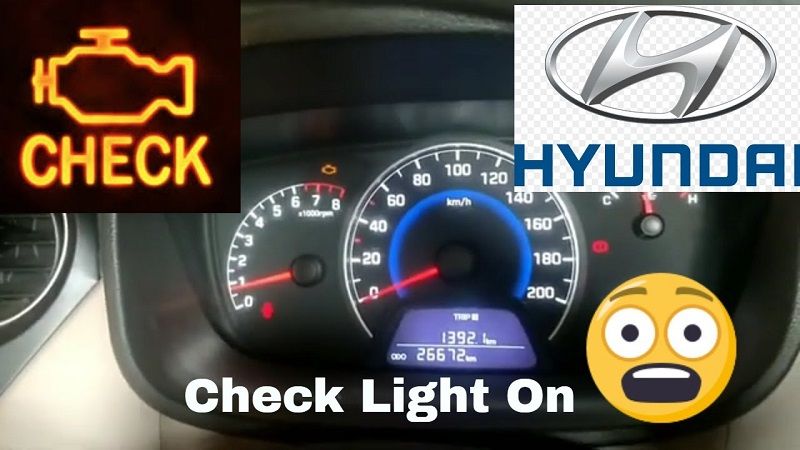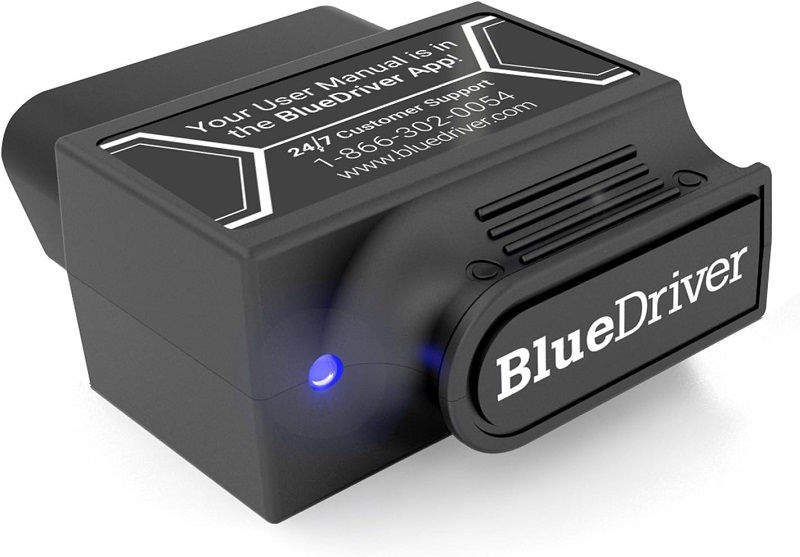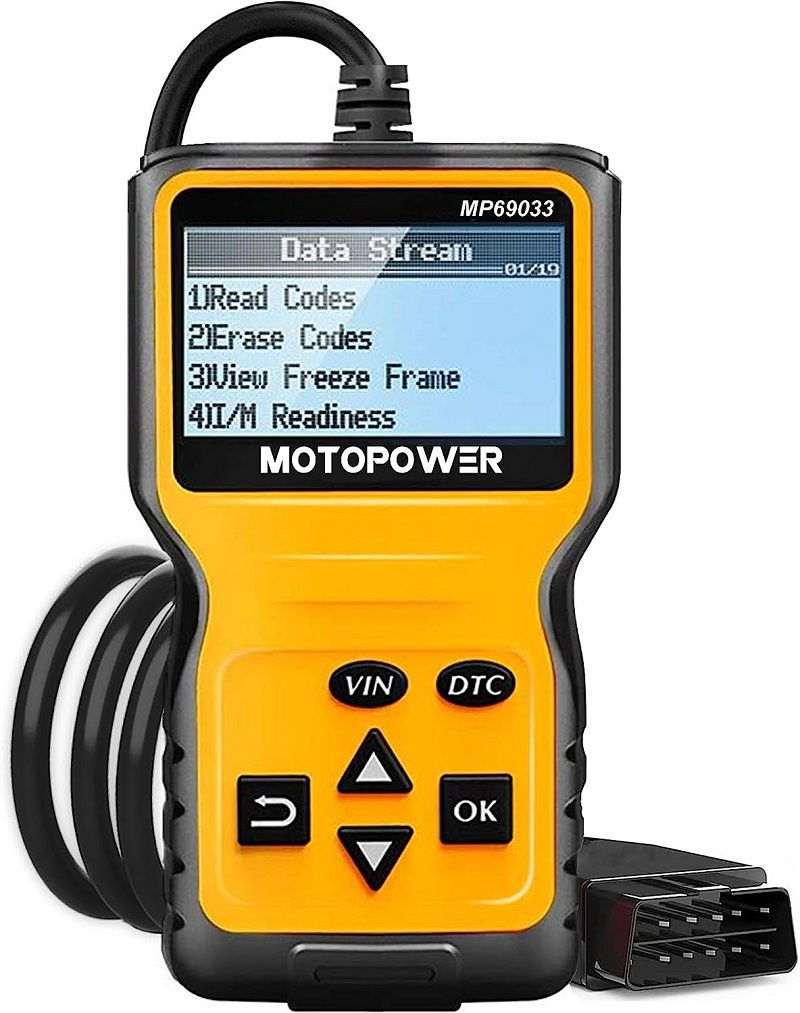This post contains affiliate links. This means I will make a commission at no extra cost to you should you click through and make a purchase [ “As an Amazon Associate, I earn from qualifying purchases.” ]. Read the full disclosure here.
Hyundai Malfunction Indicator Light Stays On GuideMechanic.Com When you start your Hyundai and notice that the malfunction indicator light (MIL) remains illuminated, it can be a cause for concern.
This warning light, often represented by an engine symbol, indicates that there may be an issue with your vehicle’s systems.
Understanding why this light stays on and what actions you should take can help you address the problem promptly and avoid potential damage or breakdowns.
In this comprehensive guide, we will delve into the purpose and function of the malfunction indicator light in Hyundai vehicles.
Understanding the Malfunction Indicator Light

The malfunction indicator light (MIL), also known as the check engine light, is a crucial component of your Hyundai’s onboard diagnostics system.
See Also: Hyundai Elantra Starter
This warning light serves as an early warning system, alerting you to potential issues within your vehicle’s various systems and components.
When the light illuminates, it signifies that the engine control module (ECM) has detected a problem and has stored a diagnostic trouble code (DTC).
These codes provide valuable information that can help you pinpoint the specific issue causing the malfunction indicator light to stay on.
The Significance of the Malfunction Indicator Light
The malfunction indicator light is an essential safety feature designed to protect your vehicle and its occupants. It acts as an early warning system, allowing you to address potential problems before they escalate.
Ignoring the illuminated malfunction indicator light can lead to more severe issues, higher repair costs, and even safety risks. Therefore, it is crucial to understand the significance of this warning light and take appropriate action when it stays on.
Possible Scenarios of the Illuminated Malfunction Indicator Light
There are various scenarios in which the malfunction indicator light may stay illuminated in your Hyundai. Understanding these scenarios can help you assess the severity of the issue and determine the necessary steps to rectify it. Some common scenarios include:
- The malfunction indicator light stays on continuously
- The malfunction indicator light flashes intermittently
- The malfunction indicator light turns on and off randomly
Each scenario may indicate a different problem, ranging from minor issues that can be resolved with simple troubleshooting to more significant problems that require professional attention.
It is crucial to observe these scenarios and note any accompanying symptoms or changes in your vehicle’s performance to aid in diagnosis.
Common Causes for the Malfunction Indicator Light Staying On
Check out this BlueDriver Bluetooth Pro OBDII Scan Tool for iPhone & Android

The malfunction indicator light can stay on in your Hyundai due to a wide range of potential causes. While it is impossible to list every possible cause, we will explore some of the most common ones in this section to provide you with a starting point for troubleshooting.
It is important to note that these causes can vary depending on the specific model and year of your Hyundai.
Loose or Damaged Gas Cap
One of the most common causes for the malfunction indicator light staying on is a loose or damaged gas cap. The gas cap plays a vital role in maintaining the proper pressure within the fuel system.
When the gas cap is loose, missing, or damaged, it can trigger the malfunction indicator light. Fortunately, this issue is relatively easy to resolve by ensuring the gas cap is securely tightened or replacing it if necessary.
Faulty Oxygen Sensor
The oxygen sensor, also known as the O2 sensor, monitors the level of oxygen in the exhaust gases. It provides feedback to the engine control module, helping it adjust the fuel mixture for optimal performance and emissions control.
A faulty oxygen sensor can cause the malfunction indicator light to stay on, indicating an issue with the sensor’s functionality. Replacing a faulty oxygen sensor is typically necessary to resolve this problem.
Malfunctioning Mass Airflow Sensor
The mass airflow sensor (MAF sensor) measures the amount of air entering the engine and helps determine the appropriate fuel-to-air ratio.
When the MAF sensor malfunctions or becomes contaminated with dirt and debris, it can provide inaccurate readings, leading to engine performance issues and an illuminated malfunction indicator light. Cleaning or replacing the MAF sensor may be required to rectify this issue.
Problematic Catalytic Converter
The catalytic converter is responsible for reducing harmful emissions by converting harmful gases into less harmful substances.
If the catalytic converter becomes clogged or fails, it can trigger the malfunction indicator light and result in decreased engine performance.
See Also: 2011 Hyundai Sonata Fuel Pump
Addressing issues with the catalytic converter often requires professional assistance, as it may need to be replaced to resolve the problem.
Faulty Ignition Coil
The ignition coil plays a crucial role in the ignition system, generating the high voltage needed to ignite the air-fuel mixture in the combustion chamber.
A faulty ignition coil can lead to misfires, reduced engine performance, and an illuminated malfunction indicator light. Replacing the faulty ignition coil is typically necessary to rectify this issue.
Issues with the EGR Valve
The exhaust gas recirculation (EGR) valve is responsible for redirecting a portion of the exhaust gases back into the combustion chamber to reduce emissions.
If the EGR valve becomes clogged or fails, it can trigger the malfunction indicator light and result in engine performance issues. Cleaning or replacing the EGR valve may be necessary to address this problem.
Problematic Throttle Position Sensor
The throttle position sensor (TPS) monitors the position of the throttle blade, informing the engine control module of the driver’s throttle input.
A malfunctioning or misadjusted TPS can cause issues with the fuel-to-air ratio and lead to an illuminated malfunction indicator light. Adjusting or replacing the TPS may be required to resolve this issue.
Issues with the Evaporative Emission Control System
The evaporative emission control system (EVAP system) prevents the release of fuel vapors into the atmosphere. If there is a leak or malfunction within the EVAP system, it can trigger the malfunction indicator light.
Diagnosing and repairing issues with the EVAP system often requires specialized equipment and expertise, making it advisable to seek professional assistance.
Problems with the Fuel Injectors
The fuel injectors deliver fuel into the combustion chamber in a precise manner. If the fuel injectors become clogged or malfunction, they may not spray fuel properly, leading to engine performance issues and an illuminated malfunction indicator light. Cleaning or replacing the fuel injectors may be necessary to resolve this problem.
Electrical Issues
Electrical problems within your Hyundai can also trigger the malfunction indicator light. These issues can range from a faulty wiring connection to a malfunctioning sensor or control module.
Diagnosing and resolving electrical problems often requires specialized knowledge and equipment, making it advisable to seek professional assistance.
Diagnosing the Issue: Steps to Take

When the malfunction indicator light stays on in your Hyundai, it is essential to diagnose the underlying problem to determine the appropriate course of action.
By following a systematic approach, you can identify the specific issue and assess whether it can be resolved through DIY methods or requires professional assistance. Here are the steps to take when diagnosing the problem:
Step 1: Check for Loose or Damaged Gas Cap
Begin by inspecting the gas cap. Ensure it is tightly secured and free from any visible damage. If you notice any issues, such as a missing or damaged gas cap, replacing it may resolve the problem. If the gas cap appears to be in good condition, proceed to the next step.
Step 2: Perform a Visual Inspection
Thoroughly inspect your Hyundai’s engine bay for any visible signs of damage, looseor disconnected components, or fluid leaks.
Pay close attention to the areas around the sensors, connectors, and hoses. If you notice anything out of the ordinary, such as a disconnected hose or a damaged sensor, it may provide valuable insight into the cause of the illuminated malfunction indicator light.
Step 3: Check for OBD-II Trouble Codes
Using an onboard diagnostic (OBD-II) scanner, retrieve the trouble codes stored in your Hyundai’s ECM. These codes can provide valuable information about the specific issue causing the malfunction indicator light to stay on.
See Also: Hyundai Elantra Spark Plugs
Connect the OBD-II scanner to the diagnostic port, typically located under the dashboard on the driver’s side, and follow the scanner’s instructions to retrieve the trouble codes. Make a note of the codes displayed, as they will aid in further diagnosis.
Step 4: Interpret the Trouble Codes
Once you have retrieved the trouble codes, refer to your Hyundai’s service manual or consult reputable online resources to interpret the codes. Each code corresponds to a specific issue within your vehicle’s systems or components.
Understanding the meaning behind the codes will help you narrow down the potential causes and guide your troubleshooting efforts.
Step 5: Conduct Component-Specific Tests
Based on the trouble codes and your visual inspection, focus on the components or systems associated with the identified issues.
Consult your Hyundai’s service manual or reliable online resources for component-specific tests and procedures.
These tests may include using a multimeter to measure electrical values, performing vacuum tests, or inspecting specific sensors for proper functionality. Follow the recommended steps carefully, and document your findings as you proceed.
Step 6: Address the Identified Issues
Once you have identified the specific issue causing the malfunction indicator light to stay on, determine whether it can be resolved through DIY methods or requires professional assistance.
For minor issues, such as a loose sensor connection, you may be able to address the problem yourself by tightening the connection or replacing a faulty component.
However, for more complex issues or those involving specialized knowledge and equipment, it is advisable to seek the expertise of a professional mechanic.
What to Do When the Malfunction Indicator Light Stays On
Once you have successfully diagnosed the issue causing the malfunction indicator light to stay on, it is crucial to take appropriate action to address the problem.
The specific steps you need to take will depend on the identified cause, and here we will outline some general solutions based on common issues:
Tighten or Replace the Gas Cap
If the cause of the illuminated malfunction indicator light is a loose or damaged gas cap, simply tighten the cap securely.
If the gas cap is missing or damaged, replace it with a new one that is compatible with your Hyundai model and year. Once the gas cap is properly installed, the light should turn off after a few driving cycles.
Replace Faulty Sensors or Components
If the issue lies with a faulty sensor or component, such as an oxygen sensor or ignition coil, replacing the malfunctioning part is necessary.
Consult your Hyundai’s service manual or seek professional assistance to ensure you select the correct replacement part and follow the appropriate installation procedures. Once the faulty sensor or component is replaced, the malfunction indicator light should turn off.
Clean or Replace Contaminated Components
In some cases, issues with components like the mass airflow sensor or fuel injectors can be resolved by cleaning them.
Use appropriate cleaning solutions and methods recommended by the manufacturer or seek professional assistance if you are unsure.
If cleaning does not resolve the issue, replacement may be necessary to rectify the problem and turn off the malfunction indicator light.
Repair or Replace Damaged Systems
For more severe issues involving systems like the catalytic converter or EGR valve, it may be necessary to repair or replace the damaged system.
These repairs often require specialized knowledge and tools, making it advisable to seek professional assistance.
A qualified mechanic will be able to diagnose the extent of the damage and recommend the most appropriate course of action to resolve the issue.
Potential Consequences of Ignoring the Malfunction Indicator Light
Ignoring the illuminated malfunction indicator light in your Hyundai can have serious implications. While it may be tempting to ignore the warning and continue driving, doing so can lead to more severe issues, higher repair costs, and potential safety risks. Here are some potential consequences of neglecting the malfunction indicator light:
Engine Damage
The malfunction indicator light often signals underlying issues that can lead to engine damage if left unaddressed.
Ignoring the warning and continuing to drive with a malfunctioning component or system can cause further damage to the engine, resulting in costly repairs or even engine failure.
Reduced Fuel Efficiency
Many issues associated with the malfunction indicator light can negatively impact your Hyundai’s fuel efficiency.
For example, a faulty oxygen sensor or clogged fuel injectors can disrupt the fuel-to-air ratio, leading to decreased mileage. Ignoring these issues can result in long-term fuel inefficiency and increased expenditure on fuel.
Increased Emissions
The malfunction indicator light often indicates problems with the emission control systems in your Hyundai. Ignoring these issues can lead to increased emissions, contributing to environmental pollution and potentially violating local emissions regulations.
See Also: Hyundai Catalytic Converter
Addressing the problems promptly will help maintain your vehicle’s eco-friendliness and compliance with emissions standards.
Unexpected Breakdowns
Continuing to drive with a persistent malfunction indicator light increases the risk of unexpected breakdowns.
Ignoring the warning signs can result in sudden engine failure or other system malfunctions, leaving you stranded on the road and requiring expensive and inconvenient towing services.
Safety Risks
Some issues associated with the malfunction indicator light, such as faulty ignition components or braking system problems, can pose safety risks.
Ignoring these issues can compromise your vehicle’s ability to perform essential functions, increasing the likelihood of accidents or other safety-related incidents. Promptly addressing the problems will help ensure your safety and the safety of others on the road.
Resetting the Malfunction Indicator Light
Once you have successfully resolved the underlying issue causing the malfunction indicator light to stay on, it is necessary to reset the light.
Resetting the light ensures that it no longer remains illuminated and serves as confirmation that the problem has been addressed. Here are the general steps to reset the malfunction indicator light:
Step 1: Ensure the Issue Is Resolved
Before resetting the malfunction indicator light, double-check that you have resolved the identified issue or replaced the faulty component.
It is crucial to ensure that the problem has been rectified to prevent the light from reappearing soon after resetting.
Step 2: Disconnect the Battery
To reset the malfunction indicator light, you will need to disconnect the negative terminal of the vehicle’s battery. Locate the battery in your Hyundai’s engine bay and use a wrench or socket to loosen the nut securing the negative cable.
Once the nut is loose, carefully lift the cable off the battery terminal. Ensure that the cable does not come into contact with any metal surfaces to prevent accidental reconnection.
Step 3: Wait for a Few Minutes
With the battery disconnected, wait for a few minutes to allow any residual electrical charge to dissipate from the vehicle’s systems.
This waiting period ensures that the ECM resets completely and clears any stored trouble codes related to the previous issue.
Step 4: Reconnect the Battery
After the waiting period, reconnect the negative cable to the battery terminal. Ensure that the cable is securely tightened to prevent any issues with electrical connections.
Step 5: Start the Engine
Once the battery is reconnected, start your Hyundai’s engine and allow it to run for a few minutes. This will allow the ECM to initialize and perform a self-diagnostic check.
During this time, the malfunction indicator light should remain off if the issue has been successfully resolved and the reset was performed correctly.
Step 6: Confirm the Reset
After the engine has been running for a few minutes, check to ensure that the malfunction indicator light remains off.
Observe the dashboard for any additional warning lights or abnormal behavior. If the malfunction indicator light stays off and no other issues are present, it indicates a successful reset.
See Also: 2013 Hyundai Elantra Alternator
Related video of Understanding the Hyundai Malfunction Indicator Light Stays On: Causes and Solutions
- Cheap Lifted Diesel Trucks for Sale - December 16, 2025
- Lifted Ford Diesel Trucks for Sale - December 15, 2025
- Lifted GMC Diesel Trucks for Sale - December 14, 2025
